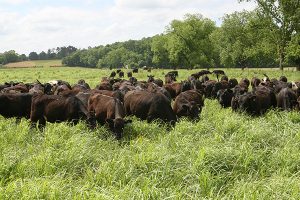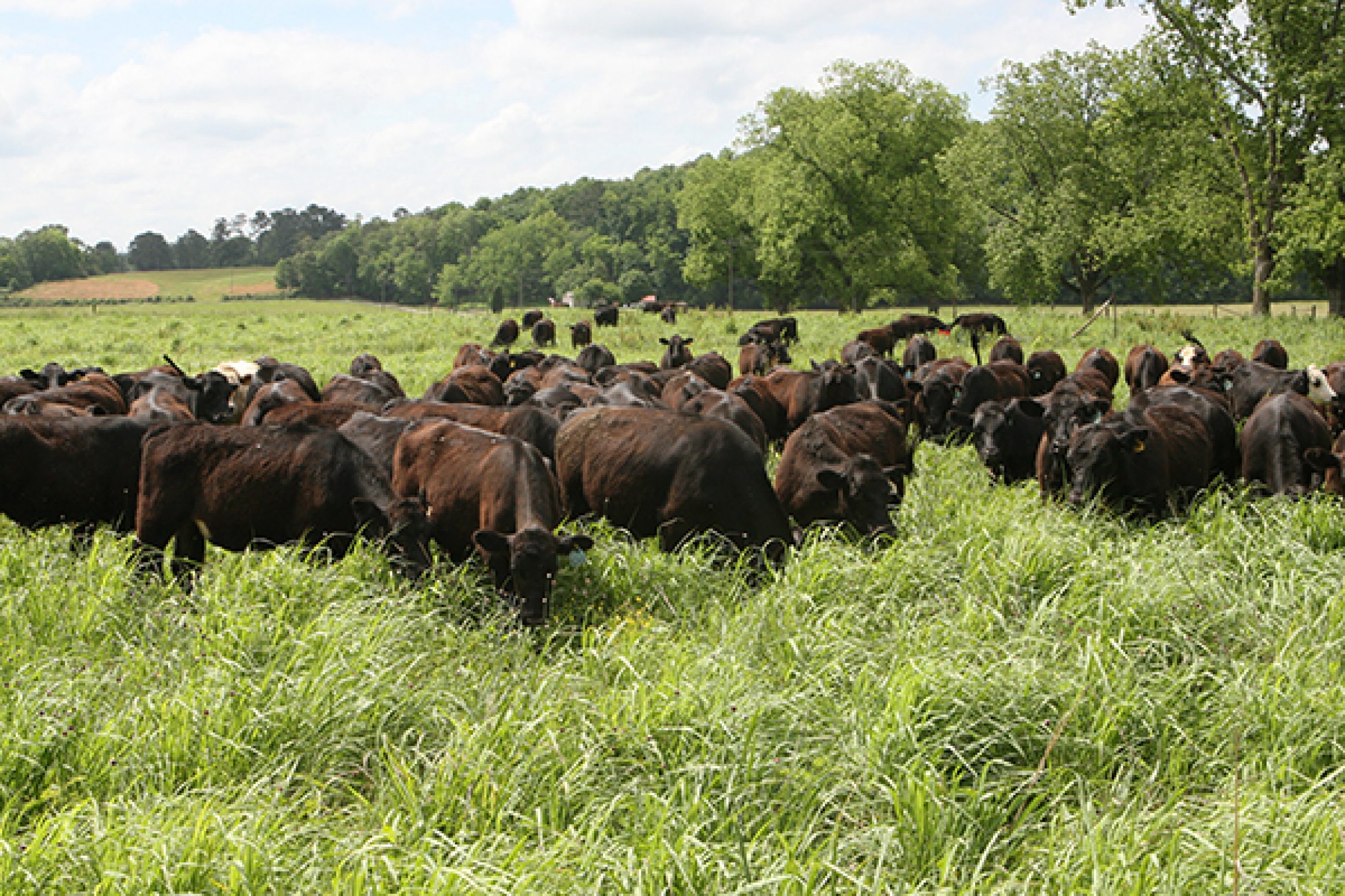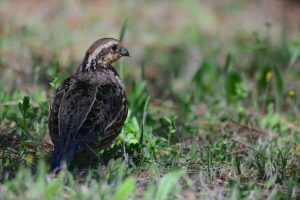To help the bird conservation community speak with a unified voice about common needs and themes, NABCI assembled the National Bird Conservation Priorities, which highlight 10 Priority Actions organized across 5 conservation themes. In 2019, NABCI’s All-Bird Bulletin Blog will highlight projects and programs that work to achieve one or more of these Priority Actions. Today’s blog highlights an initiative that aligns with Land and Water Conservation Priority Action: Work with private agricultural landowners to implement grazing strategies that meet the economic bottom line for agriculture while promoting healthy bird and other wildlife populations. This blog and our next both focus on the Northern Bobwhite.
When it comes to keeping cows fat and happy, the newest available science shows integrating native grasses into grazing lands is a good option for agricultural producers.
A literature review conducted by the University of Tennessee and funded by USDA found strong evidence that using native warm-season grasses caused steers to gain more weight per day and yield more beef per acre, compared with non-native grasses like tall fescue.
This means, producers managing for these grasses can benefit both their livestock and a wide array of wildlife species, including the Northern Bobwhite and other ground-nesting birds.
Native Versus Non-Native Grasses
Native grasses like switchgrass, big bluestem, Eastern gamma, and Indiangrass are heat- and drought-tolerant. They’re native to the eastern United States, and they’re good alternatives to introduced grasses like tall fescue and bermudagrass.
Tall fescue grows slowly over the summer. It can also be infected by an endophyte that is toxic to cattle and reduces growth and reproductive success. One potential solution to this “summer slump” in quality forage is augmenting grazing systems to include native warm-season grasses.

Native warm-season grasses provides quality forage for livestock and habitat for the Northern Bobwhite.
Key Findings
The literature review, published by USDA’s Natural Resources Conservation Service (NRCS) in its Science to Solutions report series, highlights how native warm-season grasses provide quality forage for livestock. For example, average daily growth for steers grazing switchgrass during the summer was 66 percent higher than steers grazing tall fescue and bermudagrass, both non-natives.
Additionally, the report highlighted how steers performed in different types of pastures. Steers grazing:
- Eastern gamma – gained 1.91 pounds per day with a total beef yield of 671 pounds per acre;
- Switchgrass – gained 2 pounds per day with a total beef yield of 749 pounds per acre;
- Big bluestem – gained 2.38 pounds per day with a total beef yield of 653 pounds per acre; and
- Combination of tall fescue and bermudagrass – gained 1.6 pounds per day with total beef yield of 513 pounds per acre.
The report also has information on expected beef yield and net returns as well as the costs of grazing cattle on native warm-season grass. The report highlighted that while producers need to make an investment to establish native grasses, the initial savings of a system with annuals was offset by the management costs of machinery and fertilizers.
“The science has continued to show that natives have a lower cost of production in the long-run,” said Chris Boyer, an associate professor with the University of Tennessee’s Department of
Agricultural and Resource Economics.
Download the report.
Wildlife Benefits
The Northern Bobwhite is one of the priority species of NRCS, and the agency is working with producers in the East to manage grazing lands and pine forests to benefit the species, which has seen its population dip by more than 80 percent across large sections of its range during the past 60 years largely because of habitat loss.
The Northern Bobwhite depends on native grasslands and other “edge” habitats to raise their young, find food, and seek escape cover, and producers can manage for these grasslands to provide habitat and quality forage at the same time.
NRCS provides technical and financial assistance to help producers integrate native warm-season grasses into their grazing systems. The Environmental Quality Incentives Program and other Farm Bill programs help producers cover part of the costs for implementing conservation practices like prescribed grazing, brush management, biomass and forage planting, and fencing.
More Information
Producers interested in assistance are encouraged to contact their local USDA service center. If you want to learn more about NRCS’ efforts to support the Northern Bobwhite, read our Beef and Bobs blog or download our Working Lands for Northern Bobwhite fact sheet.


